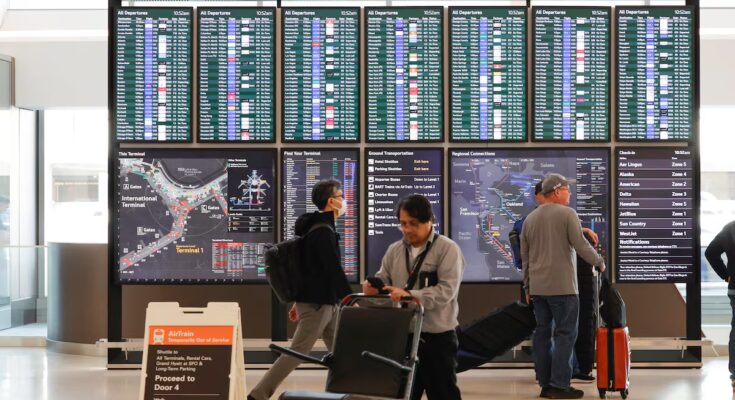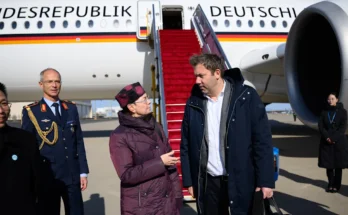Starting Monday morning, the 40 largest airports in the United States will be able to return to normality after the collapse suffered due to the federal government shutdown, which lasted 43 days, the longest in history. The authorities announced on Sunday that they will abolish the restrictions imposed on air traffic since November 7th.
Staffing shortages, due to a lack of air traffic controllers and other airport security personnel, have led to Transportation Secretary Sean Duffy; and the head of the Federal Aviation Administration (FAA), Bryan Bredford, to impose extraordinary restrictions to reduce air traffic by up to 10% of flights due to the risk of collapse. During the 10 days that the air restrictions lasted, airlines canceled thousands of flights, affecting hundreds of thousands of travellers.
After the federal government reopened last week, officials are returning to work, allowing activity to gradually recover. The Department of Transportation and the FAA announced Sunday that they will lift restrictions at major airports around the country starting Monday at 6 a.m. “This means normal operations can resume across the National Airspace System (NAS),” Bedford said in a statement.
The restoration of normal airspace already began last Friday when restrictions were reduced from 6% of all flights to 3%.
🚨The @FAANews you have determined that normal flight operations can resume after several days of positive staffing with air traffic controllers in our towers.
Now we can refocus our efforts on hiring and building the American people’s state-of-the-art air traffic control system… https://t.co/28wQpOfKHD
—Secretary Sean Duffy (@SecDuffy) November 17, 2025
“Today’s decision to lift the order reflects the continued decline in personnel concerns throughout the National Airspace System and allows us to return to normal operations,” the FAA Administrator added.
Flight cancellations began last Friday, November 7 and have continued for 10 days. The failure to reach an agreement between Republicans and Democrats on expanding budgets has led to a government shutdown since October 1. Thousands of public employees have stopped receiving their salaries.
Air traffic controllers were forced to stay at work despite being unable to get paid. Many took sick leave because they were looking for another source of income with which to pay their mortgage, car payment or their children’s school fees. More than one in four Americans live paycheck to paycheck, and any interruption in income causes a huge problem.
The situation aggravated an already complicated situation in the airline system. Of the 14,000 air traffic controller positions in the United States, there are about 3,000 vacant, and the strain felt by active workers is causing some problems at airports with more delays than usual. Duffy insisted that the reduction in the number of flights was necessary to relieve pressure on air traffic controllers, who were working without pay during the closure.
“Staffing levels have continued to recover since the end of the government shutdown. The positive trend continued over the weekend, with six staffing advisories on Friday, eight on Saturday and just one on Sunday,” the Federal Aviation Administration said in a statement. In the days when the federal government went into lockdown, there were as many as 81 alerts due to understaffing, the FAA says.
Airline data monitoring portal FlightAware recorded just 22 cancellations for Monday, a far cry from the nearly 2,000 flight suspensions that occurred on some days last week.
“Normal flight operations can resume after several days of positive staffing with air traffic controllers in our towers,” wrote Sean Duffy on the social network



